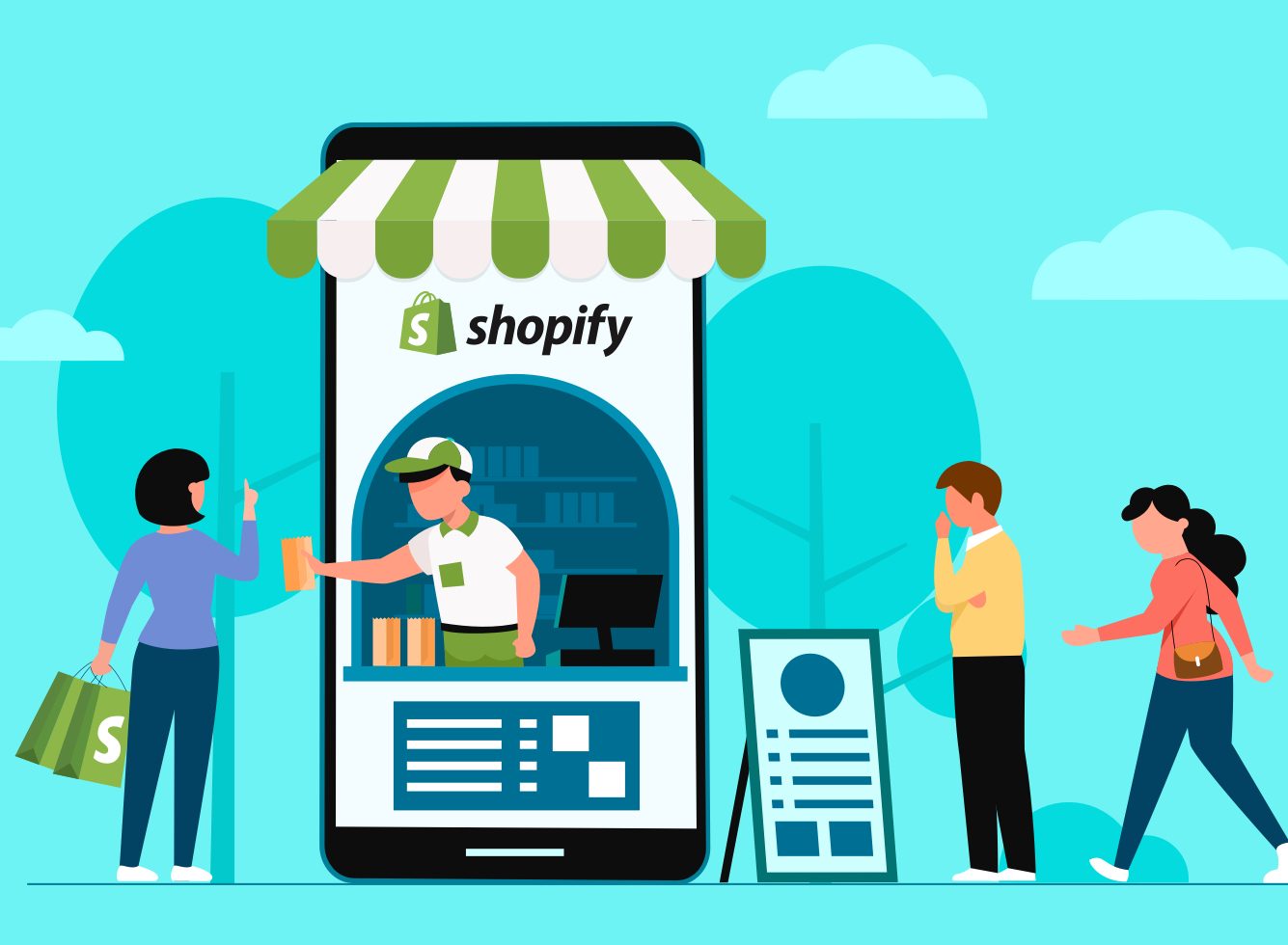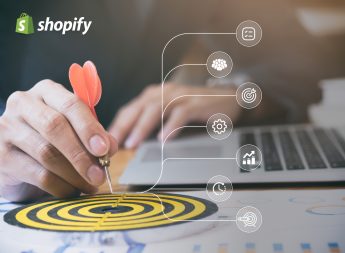13 Useful Tips for Merchants Building a Successful Shopify Store

But, even with all Shopify’s advantages, there are some things you need to know before you launch your store. The eCommerce landscape is fiercely competitive and if you want to stand out from the crowd, you need to be prepared. We’ve put together a list of 13 things you need to know before starting your Shopify development project, to give you the best chance of success.
How to Build a Successful Store on Shopify
One of the best things about Shopify as an eCommerce platform is that it allows merchants an enormous degree of flexibility. Shopify developers can easily create a store with a unique brand identity, add features and plugins to improve the customer experience, and use a wide range of marketing tools to reach target audiences. With so much freedom and choice, it’s easy to get overwhelmed. Where do you start? What’s the best approach to take?
Here are our 13 top tips for merchants who want to build a Shopify store that achieves real success.
-
Go Headless
- Keep your domain models independent: When you’re decoupling the frontend and backend of your store, it’s important to maintain an independent domain model. This means not relying on the database structure of your headless commerce platform to dictate the structure of your frontend code. Instead, you should design your frontend to be independent of the backend, so that it can be easily ported to another platform if necessary.
- Choose your API stack wisely: Before selecting which programming language you want to use to design your endpoints, first consider what you want the API to achieve. Will it be used primarily for data retrieval, or will you need to support complex business logic? Do you need to support real-time interactions, or can the API be updated on a regular basis? Once you’ve answered these questions, you can start to narrow down your options.
- Think about API usage patterns: Headless APIs often experience heavier usage than traditional web APIs. Every customer page view might result in multiple API calls, so it’s important to design your API with performance in mind. One way to do this is to think about common usage patterns and design your API accordingly. For example, if you know that customers will frequently view the same product detail page multiple times, you can cache the data to improve performance.
- Carefully consider your authentication methods: Your store likely has a number of different types of users, each with its own permissions and access levels. There are many flexible authentication methods available, so it’s important to select the one that best suits your needs. For example, Customer JWTs allow you to securely authenticate customers and make customer data available to your frontend.
- Facilitate a positive developer experience: A headless setup can be complex, so it’s important to invest in the Shopify developer experience. This means providing clear and concise documentation, setting up a continuous integration/ continuous deployment (CI/CD) pipeline, and using a tool like GraphQL Inspector to help developers understand the data they’re working with.
-
Optimise the Performance of Your Backend
- Evaluate the performance of each endpoint: To identify areas for improvement, you need to first understand how each endpoint is performing. This means monitoring the response time, error rate, and throughput for each endpoint.
- Implement caching: Caching is a great way to improve the performance of your backend by reducing the number of database queries that must be made.
- Load balance your requests: When you have a large number of users making requests to your store, it’s important to distribute the load across multiple servers. This will help to prevent any single server from becoming overloaded.
-
Prioritise Sustainable Development Principles
- Design-conscious: The first step is to be aware of the environmental impact of your Shopify development choices. This can mean designing a user experience that requires minimal interaction, which reduces the amount of time and energy required to complete a task. It might also mean keeping your colour palette muted, so as to not emit excess light.
- Code-conscious: Sustainable coding should be efficient to consume the least amount of resources possible. This can be achieved by shrinking scripts, compressing downloaded files, and only loading resources that are necessary.
- People-conscious: Your online store is used by real people with real needs. It’s important to consider the psychological impact of the choices you make during Shopify web development. This might mean designing for clarity and simplicity, providing alt tags for images, and using fonts that are easy to read by those with vision impairments.
- Partner-conscious: It’s not enough to just consider the environmental and social impact of your own development choices. You also need to evaluate the third-party services and products you’re using. This means ensuring that your Shopify integration partners are adhering to sustainable development principles themselves.
- Content-conscious: The final principle is to be aware of the impact of the content you’re creating. Are your images optimised? Is that video absolutely essential? Consider the environmental impact of your content choices before you hit publish.
-
Harness the Power of Shopify’s AJAX API
- Enable AJAX filtering: This means your users can filter products down to specific variants without having to reload the page.
- Include AJAX pagination: This means your users can view more products without having to reload the page.
- Create dynamic quick shop popups: These are popups that display product information without opening up a new page.
- Integrate a predictive search bar: This is a search bar that shows predictive text searches as the user is typing, providing them with suggestions of products that they might be looking for.
- Integrate Native Custom Metafields
- Add extra product data: This could include information such as product dimensions, materials, or care instructions.
- Include custom collection data: This could be things like seasonality, inspiration, or target audience.
- Add extra page data: This could be used to add extra information to your About Us page, such as company history or team bios.
-
Display Your Products in 3D
- View the product from all angles
- Zoom in to get a closer look at the details
- Rotate the product to see it from all sides
-
Address the Issue of Competing Apps
- Fetch the latest order info directly from Shopify: Rather than relying solely on the information from the webhook, let the app fetch the latest information from Shopify. This will ensure that the app always has the most up-to-date information.
- Utilise GraphQL mutations: Rather than using REST, utilise GraphQL mutations to update data. This will allow you to specify exactly what data you want to update, which will avoid any potential conflicts or overwriting of existing data.
- Include a built-in delay: Include a delay in your app so that it doesn’t try to access the data too soon. This will give other apps enough time to finish their actions and avoid race conditions.
-
Provide a Variety of Payment Options
- PayPal: One of the largest payment processors in the world, PayPal is a safe and easy way for customers to pay for online purchases.
- Apple Pay: Apple Pay is a secure way to pay using an iPhone, iPad, or Apple Watch.
- Google Pay: Google Pay is a way for customers to pay using an Android device.
- Shopify Payments: Shopify Payments is a payment processor that’s built into the Shopify platform. It’s easy to set up and use, and doesn’t require a third-party payment processor.
-
Maintain High Content Standards
-
Integrate with Social Media
- Add social media sharing buttons to product pages: Add social media sharing buttons to your product pages so that customers can share your products with their followers.
- Add social media links to your home page: Add social media “follow” links to your homepage so that customers can connect with you on your social media accounts.
- Display your social media feed: There are a number of apps you can install to add social media functionality to your store, such as displaying your Twitter feed.
-
Setup Tax & Shipping Rates
-
Prioritise Checkout Simplicity
- Reduce the number of steps in the checkout process: The fewer steps your customers have to go through to complete their purchase, the better.
- Offer guest checkout: Guest checkout allows customers to complete their purchase without creating an account. This can help to reduce friction in the checkout process.
- Display progress indicators: Progress indicators help customers to see how far they’ve progressed through the checkout process, and how many steps they have left to go.
-
Evaluate Your Tech Stack on a Frequent Basis
- Do you still need all the apps you’re using?
- Are customers still using the features that your tech stack provides?
- Are there any new apps or tools that could help you improve your business?
- Does your store still load quickly, even with all of the apps and features you’re using?
- Is your tech stack still easy to use and maintain?
When something is “headless” it means that the frontend and backend are decoupled, or not connected. In a headless commerce setup, the customer-facing part of the store (the frontend) is separate from the eCommerce platform that powers it (the backend). With the release of Shopify Hydrogen, a React-based frontend, Shopify announced its intention to move towards a headless architecture. This is a big deal because it gives merchants even more flexibility in how they build and customise their stores. However, there are a few key considerations for merchants who want to design their stores according to headless principles:
Shopify developers often focus the majority of their efforts on improving the more visible frontend side of their store. However, it’s important to remember that the backend plays a crucial role in determining the overall performance of the eCommerce website. With increased user requests, your backend needs to be able to scale quickly and efficiently.
Here are a few Shopify tips to help you optimise the performance of your backend:
What is sustainable Shopify web development? In short, it’s when Shopify developers build a store that can continue to operate in the long term without damaging the environment or depleting natural resources. In other words, it’s about creating a business that is environmentally, economically, and socially sustainable.
According to the Conscious Development framework, which was created by Tom Locke (founder of Shopify agency Noughts & Ones), developers should consider the following five principles:
The Ajax API is a powerful tool that allows you to make asynchronous requests to the Shopify backend, without having to reload the page. This means you can load data onto the page without interrupting the user’s experience. You can use the AJAX API tool to:
The beauty of using AJAX API is that it makes for a much smoother user experience without any reliance on third-party applications. Loading times are reduced and the overall experience is much more fluid.
With the introduction of Shopify Online Store 2.0 the store now supports custom metafields. This means you can add custom fields to products, collections, pages, and blog posts without relying on a third-party application.
Adding custom fields gives you the ability to add extra data to your store, enabling you to create a more personalised experience for your customers. For example, you could use custom fields to:
Including custom fields is a great way to add extra data to your store without cluttering up the interface. It also enables you to create a more personalised experience for your customers while making it easier to update and maintain your store.
If you’re selling physical products, it’s important to give customers a realistic idea of what they’re going to be buying. This is where 3D modelling comes in. Creating 3D models of your products gives customers a much better idea of what they’re going to be receiving. If you’re adhering to conscious development principles, then Shopify developers can also use 3D models to reduce the carbon footprint of the Shopify store. Customers will be less likely to order products that they’re not sure about, and you’ll be able to avoid the cost and environmental impact of returns.
3D modelling allows your customer to:
During the pandemic, when online shopping was at an all-time high, it became more important than ever for customers to have a realistic idea of what they were buying. This raised the bar for Shopify eCommerce development, and those who didn’t have 3D models of their products were at a disadvantage. Some eCommerce brands have even taken to using augmented reality (AR) to give customers an even more realistic view of their products. Customers can see how a rug would look in their living room or how a piece of jewellery would look on them, without having to leave their house.
Some online clothing retailers have begun to show videos of their clothes being worn, giving customers a better idea of how they would look in real life. With so many customers now shopping online, it’s important to give them the best possible experience and 3D modelling is one way to do that.
Apps are a powerful tool for Shopify developers. They allow merchants to add extra functionality to their stores. However, when you have five or six apps running to support your store, each created by different Shopify app development teams, you can face certain issues. This situation sometimes leads to something called race conditions.
A race condition is when two or more apps are trying to access and change the same data at the same time. This can lead to data being overwritten or lost and can cause errors in your store. To avoid race conditions, it’s important to have a plan for how different apps will interact with each other. This way, you can avoid any potential conflicts and ensure that your store runs smoothly.
To do this, you can follow the techniques below:
What stands between your Shopify site and a sale? Payment options. In order for customers to buy from your store, they need to be able to pay you, and that means offering a variety of payment options. Giving your customers a good choice of Shopify payment options is important for two reasons. Firstly, it makes it easier for them to pay for your products, which is the entire raison d’être of your store. Secondly, it shows that you’re a flexible and customer-focused business.
The days are gone when credit cards were the only way to pay for online purchases. Now, there are a variety of Shopify payment methods available, and customers expect to be able to choose the one that suits them best. Some of the most popular payment options for Shopify stores include:
Shopify integrates with over 100 payment providers across the world, so there’s sure to be one that’s right for your store. The important thing is to offer a selection of Shopify payment methods so that your customers can choose the one that suits them best.
You might be so focused on the design and functionality of your Shopify store that you forget about the most important thing — the content. The words on your website are what sell your products, so it’s important to ensure they’re well-written and engaging. Spelling mistakes and grammatical errors will make your store look unprofessional, so proofread your content carefully. Well-written copy not only builds trust but also improves your search engine ranking.
The best way to ensure high content standards is to hire a dedicated copywriter who is responsible for creating and maintaining your content. They should be able to write compelling copy that’s on-brand and optimised for search engine ranking. They should also be able to create high-quality product descriptions, blog posts, and social media content. Every sentence counts, so it’s vital to make sure that your content is of the highest possible quality.
Social media is a powerful marketing tool — and it’s one that you should be exploiting to the fullest. By integrating your Shopify store with social media, you can reach a wider audience and drive more traffic to your website.
There are a few different ways to integrate your website with social media:
When you build a Shopify store, it’s important to think about the taxes and shipping that will apply to your products. Depending on where you’re located and where your customers are located, you may be required to charge taxes on your products. Shopify has a default tax setting for each country, but you can also set up custom tax rates if you need to. It’s crucial to get your tax setup right, as you may be required to pay penalties if you don’t charge the correct amount of tax.
Shipping can also be a complex issue, and it’s one that you need to think carefully about. You’ll need to decide who will pay for shipping, and how much you’ll charge for shipping. You’ll also need to take into account the different shipping options you want to provide, such as standard shipping, express shipping, and international shipping. Under Shopify’s Shipping and Delivery settings, you can set up shipping zones and conditional shipping rates. This allows you to offer different shipping rates based on the location of your customers, or a minimum order value.
The checkout process is one of the most important aspects of Shopify web development, as it’s the last step in the sales process. You need to make sure that your checkout process is as simple and streamlined as possible because customer frustration leads to abandoned carts.
Here are a few Shopify best practices that can help streamline your checkout process:
Your tech stack is the collection of software and tools you use to run your Shopify eCommerce store. As your store grows, your tech stack will need to evolve to meet your changing needs. It’s important for Shopify developers to evaluate the tech stack on a regular basis and ensure it’s still fit for purpose.
Here are a few things to consider when evaluating your tech stack:
When you’re evaluating your tech stack, it’s important to think about the future of the store. If it suddenly starts experiencing an uptick in sales, then you may need to scale your tech stack to meet the demand. It’s also vital to evaluate the cost of your tech stack to make sure that you’re not spending more than you need to.
Consult a Shopify Web Development Expert
With the eCommerce industry growing at an incredible speed, Shopify is rising to meet the demand for fast, effective online storefronts. Containing all the functionality a merchant could need to succeed online, Shopify is the perfect eCommerce solution for businesses of all sizes. By following the above tips, you can create a Shopify store that is performant, sustainable, scalable, and above all, successful.
However, if you need further assistance developing or scaling your Shopify store, don’t hesitate to reach out to a Shopify web development expert. Our Shopify agency has a team of highly experienced Shopify developers who can provide tailored support and development services to help you reach your eCommerce goals. Contact us today to learn more.



